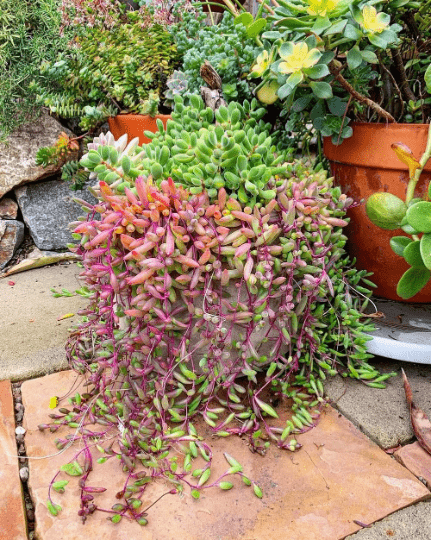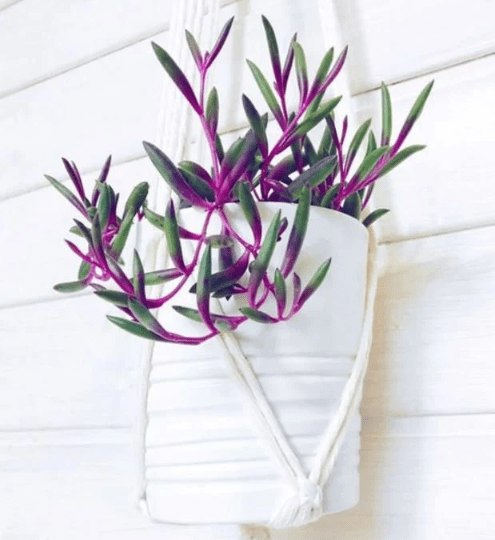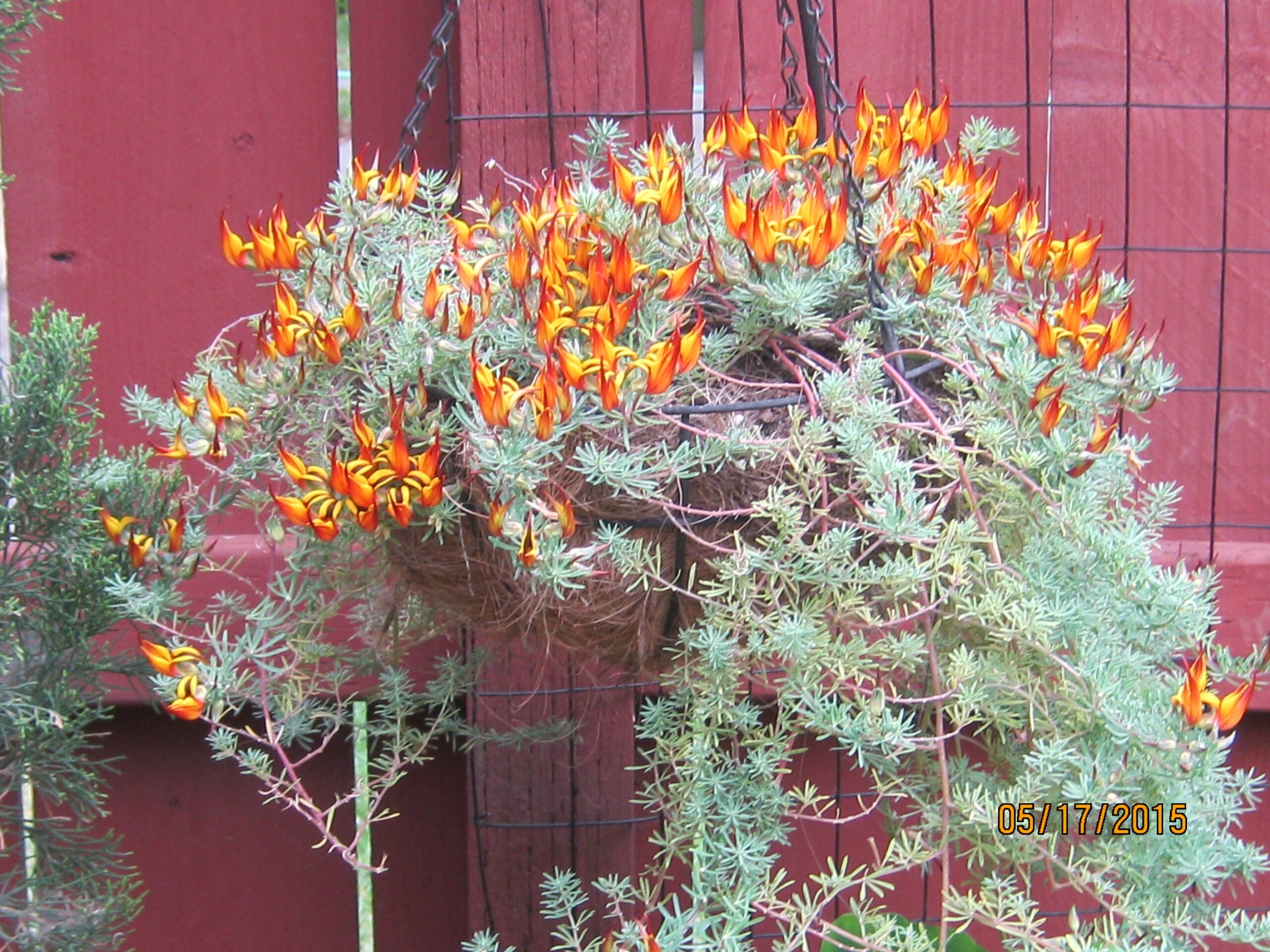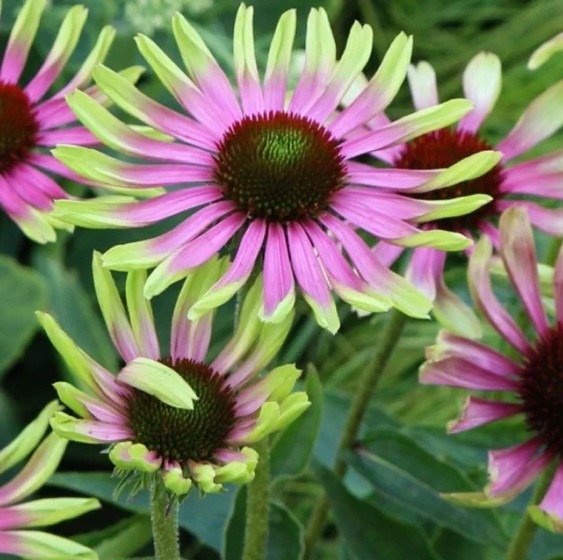What is a Ruby Necklace Succulent?

The Ruby Necklace (Othonna capensis) is a species of flowering succulent plant that is native to South Africa. It is also known by the common name “little pickles” due to the shape of its green, cylindrical leaves. This plant is often grown as an ornamental due to its attractive foliage and yellow, daisy-like flowers.
Dimensions:
The size and dimensions of Othonna capensis can vary depending on growing conditions and location. However, in general, this species of succulent can reach a height of up to 30 cm (12 inches) with a spread of about 20 cm (8 inches). The cylindrical leaves are typically 2-3 cm (0.8-1.2 inches) in length and about 1 cm (0.4 inches) in diameter.
Zones:
Ruby Necklace is a frost-tolerant succulent plant that is well adapted to growing in warm, arid climates. In terms of hardiness zones, it can be grown in USDA zones 9-11, where the minimum average temperature is between 20°F to 40°F (-6.7°C to 4.4°C). It is also commonly grown as a houseplant in cooler climates, as it can be sensitive to prolonged exposure to cold temperatures. To ensure optimal growth, it is important to provide this plant with bright, indirect light, well-drained soil, and adequate water during the growing season.
How to Tend:
Tending Inside
When grown as a houseplant, this plant requires the following care:
- Light: This plant prefers bright, indirect light, but can tolerate some direct sun. Avoid exposing it to intense, direct sunlight for extended periods of time, as this can cause the leaves to yellow or become sunburned.
- Water: Water regularly during the growing season (spring and summer), allowing the soil to dry out between waterings. In the winter, reduce watering to prevent root rot.
- Soil: This plant prefers well-draining soil that is high in organic matter. A cactus or succulent potting mix is ideal.
- Temperature: Not frost-tolerant and should be protected from temperatures below 40°F (4.4°C). It is best suited to a warm, well-lit room with stable temperatures.
- Fertilizer: Fertilize with a balanced, water-soluble fertilizer once a month during the growing season.
- Pruning: Prune back any leggy growth to encourage bushy growth. Cut back the plant by about a third in late winter or early spring.
With proper care, Ruby necklace can make a beautiful, low-maintenance addition to your indoor garden.
Tending Outside
When grown outside, requires the following care:
- Light: This plant prefers bright, indirect light, but can tolerate some direct sun. Avoid exposing it to intense, direct sunlight for extended periods of time, as this can cause the leaves to yellow or become sunburned.
- Water: Water regularly during the growing season (spring and summer), allowing the soil to dry out between waterings. In the winter, reduce watering to prevent root rot. This plant is drought-tolerant and can withstand extended periods of dry conditions.
- Soil: This plant prefers well-draining soil that is high in organic matter. A cactus or succulent potting mix is ideal.
- Temperature: Frost-tolerant and can withstand temperatures down to 20°F (-6.7°C).
- Fertilizer: Fertilize with a balanced, water-soluble fertilizer once a month during the growing season.
- Pruning: Prune back any leggy growth to encourage bushy growth. Cut back the plant by about a third in late winter or early spring.
When growing outside, it is important to choose a location with well-draining soil and provide protection from extreme temperatures and heavy rainfall. With proper care, this plant can thrive and add an attractive, low-maintenance element to your outdoor landscape.
Where to Purchase?
You can buy this elegant plant at our Esty shop. Happy Shopping!!





